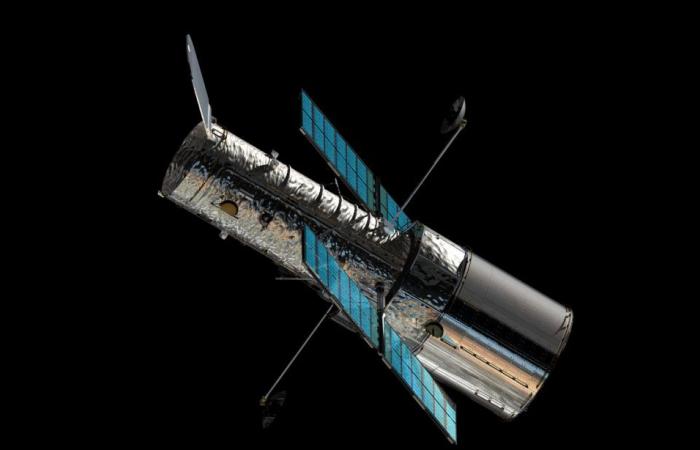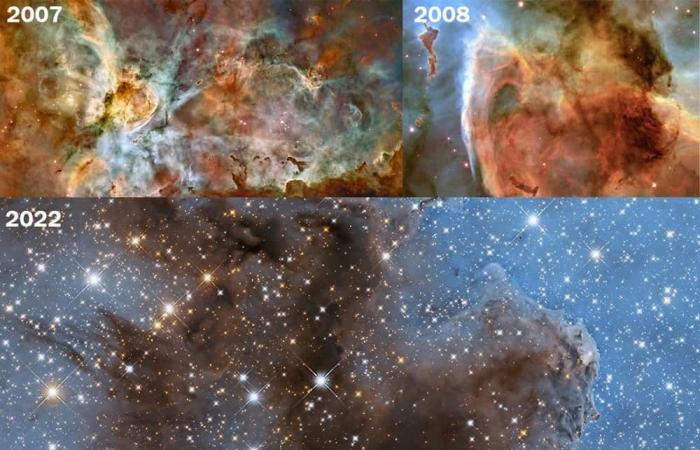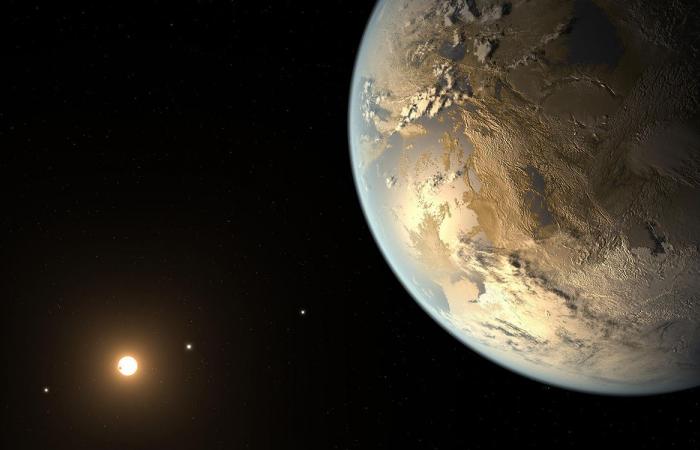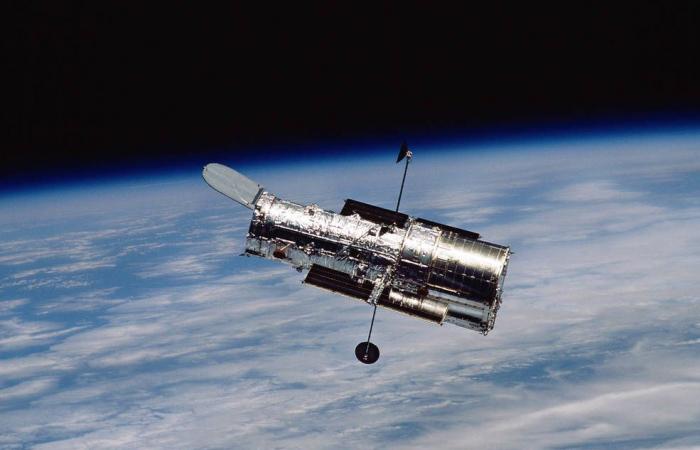The Hubble Space Telescope, one of the most significant instruments in modern astronomy, completes 34 years in orbit next Wednesday (24).
Launched by NASA in 1990, Hubble revolutionized human understanding of the universe, providing unprecedentedly sharp images and crucial data for astrophysics. Over more than three decades, Hubble has enabled the observation of hitherto unknown cosmic phenomena and structures.
To celebrate the “anniversary” of space equipment, the Chalk Brazil separated some of its main discoveries.
Supermassive black holes
The telescope has provided decisive evidence for the existence of supermassive black holes at the centers of most galaxies.
Several pieces of evidence of these objects have been found in recent decades. However, in 2023, for the first time, Hubble observed one of them.
This result appeared in a study in the journal Monthly Notices of the Royal Astronomical Society by a group of North American astronomers.
Star birth
Three captures made by Hubble of the Carina Nebula. Image: NASA/Reproduction
Detailed images of the Carina Nebula have revealed the process of star formation, with stars being born amidst clouds of gas and dust.
The Nebula, named NGC 3324, is one of the brightest in the sky and a stellar nursery, as stars are born among its clouds.
It is located 7,500 light years from Earth and is characterized by stars that appear next to it, forming a cloud of gas and stardust.
The images captured can help understand the process of star construction, as they propagate over time and are triggered by the expansion of the eroding cavity.
Exoplanets and planetary atmospheres

Hubble has identified planets outside the Solar System and studied the atmospheres of moons such as Ganymede and Europa, suggesting the presence of salt water and geological activity.
This year, for example, using Hubble, astronomers discovered a planet called GJ 9827d. It is about twice the diameter of Earth, and is the smallest exoplanet found with water vapor in its atmosphere.
Legacy and future of the Hubble telescope
Providing data for more than 16,000 scientific publications, the telescope contributed to a quantum leap in astronomical knowledge. Even after 34 years, it continues to operate and remains a vital tool for space exploration and scientific education.

Hubble in Earth orbit. Image: NASA/Reproduction
Hubble operates in low Earth orbit, about 539 kilometers above the planet’s surface.
Largely due to five successful astronaut servicing missions on the telescope, Hubble’s technology has become more subdued.
According to NASA, all indications are that the telescope will continue operating until the end of the 2020s — and possibly for many more decades.
Tags: Hubble turns telescopes greatest discoveries
--







